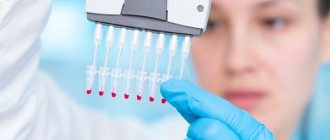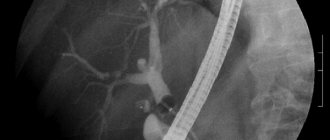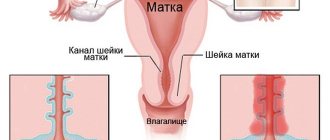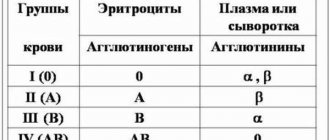Purpose of genetic testing
In most cases, to establish paternity, written evidence, testimony and photographs confirming the cohabitation of a man and woman during the alleged period of conception of the child are sufficient. If there are not enough of them, at the request of the party, a genetic DNA paternity examination is ordered, the purpose of which is to establish the fact of the relationship between the father and the child.
If DNA testing shows that the man is the biological father, the court will decide to establish paternity, even if he denies it.
A woman gets the opportunity:
- collect child support;
- determine the place of residence of the son or daughter, establish the procedure for communication with the father;
- Based on proven paternity, the child will be able to claim the father’s inheritance in the event of death.
Important! If a child was born not in an official marriage, but while living together, the father is established only when the mother and father submit an application to the registry office. Otherwise, the documents indicate the patronymic name given by the mother, and a dash is placed in the “father” column.
In the absence of a confirmed relationship, the woman will not seek child support, because officially his biological father is no one.
The results of the DNA examination fundamentally confirm the relationship between the man and the child; on their basis, the court makes a decision and appropriate entries are made in the registration documents of the minor.
How to interpret the results of a genetic examination to establish paternity or maternity?
The conclusions of the genetic examination indicate the probability of paternity (maternity) and the paternity (maternity) index. The level of evidence of an expert study in the case of possible paternity (for a study involving mother, child and putative father) for the probability of paternity must be at least 99.90% and the paternity index must be at least 1000. For a duet child-putative father in the absence of another parent, the level of evidence of the expert opinion for the probability of paternity must be at least 99.75%, and the paternity index must be at least 400. The maximum probability of paternity is 99.998%. A negative result in any case is 100%. These indicator values are regulated by clause 84.11 of the Order of the Ministry of Health and Social Development of the Russian Federation No. 346n dated May 12, 2010 “On approval of the Procedure for organizing and conducting forensic medical examinations.”
The regulatory documents defining the procedure for conducting molecular genetic examinations in the Russian Federation are:
- Federal Law of May 31, 2001 No. 73-FZ “On State Forensic Expert Activities in the Russian Federation”;
- Order of the Ministry of Health and Social Development of the Russian Federation No. 346n dated May 12, 2010 “On approval of the Procedure for organizing and conducting forensic medical examinations”;
- Guidelines of the Ministry of Health of the Russian Federation No. 98/253 dated January 19, 1999 “Use of individualizing systems based on length polymorphism of amplified fragments (LPAP) of DNA in forensic medical examination of personal identification and establishment of kinship”;
- Guidelines of the Ministry of Health of the Russian Federation No. 2001/4 dated January 25, 2001 “Application of a molecular genetic individualizing system based on polymorphism of nucleotide sequences of mitochondrial DNA in forensic medical examination of personal identification and establishment of biological relationship”;
- Family Code of the Russian Federation. Chapter 10 “Establishing the origin of children.”
Cost of DNA paternity test
Prices depend on the specific type of analysis and the pricing policy of the institution.
Table “Approximate cost of DNA test services”
| Service name | Deadline for receiving results | Cost, rub.) |
| Standard DNA testing | From 3 days | 5 000-6 000 |
| Non-invasive testing during pregnancy | From 10 to 20 days | From 35 000 |
| Express test | 8-10 hours | From 10 000 |
| Analysis for the court | 3-5 days | From 8 000 |
| Test for pre-trial paternity determination |
Note! The above prices are only approximate prices. Final prices should be obtained from the clinics. Expertise during legal proceedings will be cheaper.
Who pays for the examination?
According to Art. 96 of the Code of Civil Procedure of the Russian Federation, the analysis is paid for by the party that filed a request for its conduct. This money is recovered from the defendant after winning the case as compensation for legal expenses. When both parties need an examination, the costs are paid by the plaintiff.
If the decision to conduct a DNA test is made jointly by the parents in pre-trial proceedings, they independently decide who pays for it.
Based on Part 2 of Art. 96 of the Code of Civil Procedure of the Russian Federation, genetic examination can be paid for from the federal budget if it is appointed by a judge. However, this rule does not apply to DNA testing.
The examination is paid for from the federal budget when an expert decision is needed by the court. And to establish paternity, the plaintiff must independently prove the existence of a family relationship. The examination is not the most important evidence and is considered on an equal basis with the entire evidence base.
How to challenge paternity in court?
Claim to challenge paternity
If the father refuses to take a DNA test for court
Unfortunately, if the putative father refuses to undergo a DNA test even by court order, no one has the right to force him to do so.
But on the basis of Article 79, paragraph 3 of the Civil Procedure Code of the Russian Federation, if one of the parties refuses to participate in the collection of DNA samples, while investigating the circumstances of a particular case, the court has the right to consider the fact of the examination to have taken place and make a decision in favor of the other party, relying on other evidence.
These may include personal correspondence, money transfers from the putative father, the fact of receiving parcels with gifts for the child, facts confirming that during pregnancy the plaintiff and defendant lived together, video footage from the maternity hospital in which a man meets a mother and child after discharge, and others .
Ordering a genetic examination in court: step-by-step instructions
A request to order an analysis may be made in a statement of claim or at any stage of the legal proceedings before a decision is made.
The procedure for ordering a genetic examination:
- The plaintiff submits an application to establish paternity to the court, and a hearing is scheduled.
- If the petition was not stated in the claim, but the evidence presented is insufficient to determine the biological relationship, it is sent by the plaintiff or the defendant. If the request is granted, a determination is made to order an examination.
- Parents and the child are sent to an expert center, where biological material is collected.
- When ready, the results are handed over to the production party or sent to court.
- At the re-hearing, the court considers the expert opinion. On its basis, a decision is made to recognize the man as the father of the child if there is sufficient other evidence. It can be challenged within 30 days, after which it comes into force.
Before a decision is made, the recognized father has the right to send a counter-petition to schedule a re-examination in another institution. If the court is satisfied, the analysis is carried out again, and the results are considered at the next meeting.
If a repeated study conducted by a man indicates that he is not biologically related, the decision to recognize paternity is challenged through the appellate authority. If the complaint is satisfied, the case is sent for re-examination in a lower court.
Contents and form of a request to appoint an examination
According to Art. 35 of the Code of Civil Procedure of the Russian Federation, the parties to the proceedings have the right at any stage to file a petition for the appointment of a genetic examination.
It should contain information:
- name and address of the court where it is filed;
- Full name, residential address of the plaintiff and defendant;
- number of the case under consideration;
- circumstances that gave rise to the filing of the petition: for example, the defendant’s objection to recognizing paternity, insufficiency of evidence;
- essence: a petition to appoint an examination to determine the relationship between the defendant and the child (full name, date of birth);
- a list of submitted documents (copy of the application);
- date of compilation and signature of the initiator.
Important! The refusal to satisfy the petition is contested through the appellate authority.
How the examination is carried out: description
Genetic testing can be carried out in any medical institution with the appropriate license.
DNA test procedure:
- Mother and child go to a medical facility where a test is taken. Biomaterials are usually used from the mucous membranes: the expert takes them by running sterile cotton swabs along the inner surfaces of the cheeks of a man and a child.
- The materials are sent for research. When the results are ready, the parties receive forms containing information about the participants. When confirmed, the relationship is indicated in the document as a percentage (approximately 95-99%). There is no rounding to 100% because it may be that the man being studied has a twin brother who has an identical set of genes. Such cases are 1 in a million, but they do happen.
- The results obtained are sent to the court, and a decision is made on their basis.
Methods of conducting research
Usually, for analysis, epithelial particles are collected from the inner surfaces of the cheeks of the subjects being studied - a potential father and child. Experts may take blood, skin particles or other biomaterials.
If it is necessary to establish paternity during pregnancy, from 9-10 weeks you can use a non-invasive method: a specialist takes blood from the mother, then the plasma is separated in the laboratory, and the DNA of the fetus itself is isolated. There is no point in conducting analysis before the specified period: there is a possibility that the results will be incorrect.
What is needed to take the test?
To carry out the analysis, parents just need to bring with them:
- passports,
- court ruling ordering an examination,
- documents for the child.
If he is under 14 years old, he will need a birth certificate, or more - an identity card.
Currently, DNA testing is carried out by taking material with cotton swabs from the mucous membranes of the cheeks, but hair, blood and other biomaterials can be used. There is no need to take them yourself: everything is done in a laboratory under the supervision of a specialist.
Timing of the examination
The timing depends on the specific technique. On average, the conclusion is issued within 5-10 days.
Anonymous examination
The alleged father can contact the medical center for an anonymous analysis. The results and other documents contain minimal information about the participants; the procedure is carried out without the knowledge of the mother and child.
You can visit an institution providing such a service yourself, taking only hair with roots or other available biomaterial from the child and providing yours.
Due to anonymity, the results of such an examination cannot be added to the case file, but failure to confirm paternity will become grounds for challenge.
What happens to biological material after it is handed over to a genetic expert?
Modern research uses DNA, which encodes genetic information. In human cells, DNA is presented in the form of 46 chromosomes. He receives half of them from his mother, the other half from his father. First, the chromosomes of the mother and child are compared. Then the child's chromosomes that do not match the mother's are compared with the father's chromosomes. Paternity can be considered proven if they match. There are no contraindications or age restrictions for a genetic test to establish paternity, since a person’s DNA remains unchanged with age.
At the first stage, the expert extracts DNA from the obtained material. The process of DNA isolation from cells is a very important step, therefore, in most cases, commercial reagent kits from leading foreign manufacturers, such as Applied Biosystems (USA), Promega (USA), QIAGEN (Germany), are used for these purposes. After DNA isolation, a polymerase chain reaction (PCR reaction) is performed, as a result of which certain sections of DNA (loci) increase many times over, and their number exceeds the original by tens and even hundreds of millions of times. The DNA mixture obtained during the PCR reaction is analyzed using capillary electrophoresis and the length of the resulting loci (allelic variants) is determined. By comparing the obtained allelic variants between the child and the putative father (mother), the expert determines the biological father or mother.
For example, the D5S818 locus has 16 allelic variants. During the PCR reaction of one specific DNA sample, a multiple increase in any two of the 16 allelic variants of a given locus is possible - one allelic variant from the maternal chromosome and one allelic variant from the paternal chromosome. In the process of capillary electrophoresis, it is determined which allelic variants of a given locus are present in the DNA mixture obtained after the PCR reaction. For example, allelic variants No. 12 and No. 14 were identified in the child, No. 12 and No. 16 in the biological mother, and No. 3 and No. 14 in the putative father (Figure 1). It follows from this that the child acquired allelic variant No. 12 from the mother, and No. 14 may have been inherited from the putative father under study. By analyzing the results obtained from more than sixteen (to establish paternity) and eighteen (to establish maternity) loci, the expert establishes the probability of paternity or maternity. Calculation of matches or mismatches of allelic DNA profiles is carried out in accordance with Art. 3.4 of the guidelines of the Ministry of Health of the Russian Federation No. 98/253 of January 19, 1999 “The use of individualizing systems based on length polymorphism of amplified DNA fragments (LAF) in forensic medical examination of personal identification and establishment of kinship.”
Figure 1. The principle of establishing paternity or maternity based on the inheritance of identical alleles of autosomal loci. Different colors and letters indicate different alleles of the same locus.
Challenging the examination in court
If you do not agree with the expert opinion, you have the right to submit a request to have the analysis repeated at another institution. During the study, different biomaterials are taken: if the disputed examination was done on saliva, then the next one will be carried out on blood.
If the court rejects the petition, you will have to challenge the refusal through a higher authority.
Application form
A request to order a re-examination must contain the following information:
- address and name of the court;
- case number;
- information about the participants in the proceedings: full name, passport details, addresses;
- details of the previously obtained expert opinion, results;
- a request to order a repeat study with or without indicating a specific organization;
- inventory of documents, date and signature.
Lawyer's answers to questions about genetic testing to establish paternity
Is it possible to conduct an examination to establish paternity if the mother is against it?
No, but in this case, on the basis of Art. 79 of the Code of Civil Procedure of the Russian Federation, the court will consider that she has something to hide, and the decision will most likely be made not in her favor.
Is it possible to conduct a DNA examination after the death of the child's father?
Yes. For this purpose, biological samples of the deceased person (if available) or materials from close relatives are taken. The study is carried out using specially selected markers that make it possible to determine kinship. The accuracy of the test is close to 99%.
Is it possible to test DNA for paternity at home?
You have the right to independently take biomaterials at home and send them for research, but the conclusion will not have legal force. The collection of materials should only be carried out by a specialist so that the examination can be used for legal proceedings.
What material is needed to establish paternity?
Usually, sampling is done from the mucous membranes of the cheeks (inner surfaces). Blood, hair, nails, etc. are also taken.
Is it possible to obtain DNA for free through the court?
Yes, if the research is carried out on the initiative of the court, or the initiator has a poor financial situation, and the court considers it necessary to finance the analysis from the budget. An appropriate determination will be made regarding this.
Probability of establishing paternity using DNA analysis
The probability of establishing paternity varies from 99.9% to 99.9999%, since no expert can guarantee 100% kinship.
But these numbers speak for themselves - the biological relationship has been proven. If the test results are 0%, then the alleged father is not him.
The cost of the DNA paternity test is paid by the applicant, the one who applies for the examination. Sometimes, by a court decision, both parties are required to pay for the test in half.
You will probably be interested in looking at a mental map of what can cause you to lose parental rights
Or find out HERE how to apply for child support









